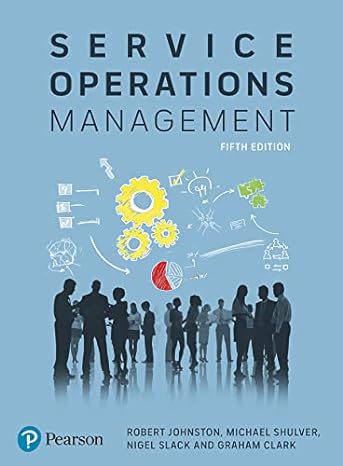Lucy is the COO of an outsourcing business that provides back-office services to a range of companies.
Question:
Lucy is the COO of an outsourcing business that provides ‘back-office’ services to a range of companies. She believes that:
everything we do can be broken down into a process. It may be more straightforward in a manufacturing business, but the concept of process improvement is just as powerful in service operations. Using this approach our team of black belts has achieved 30 per cent productivity improvements in six months. I think Six Sigma is powerful because it is the process of comparing process outputs against customer requirements. To get processes operating at less than 3.4 defects per million opportunities means that you must strive to get closer to perfection and it is the customer that defines the goal. Measuring defects per opportunity means that you can actually compare the process of, say, a human resources process with a billing and collection process.
(a) What are the benefits of being able to compare the amount of defects in a human resources process with those of collection or billing?
(b) Why is achieving defects of less than 3.4 per million opportunities seen as important by Lucy?
(c) What do you think are the benefits and problems of training black belts and taking them off their present job to run the improvement projects, rather than the project being run by a member of the team that has responsibility for actually operating the process?
Step by Step Answer:

Service Operations Management
ISBN: 978-1292064468
5th Edition
Authors: Robert Johnston ,Michael Shulver ,Nigel Slack ,Graham Clark





